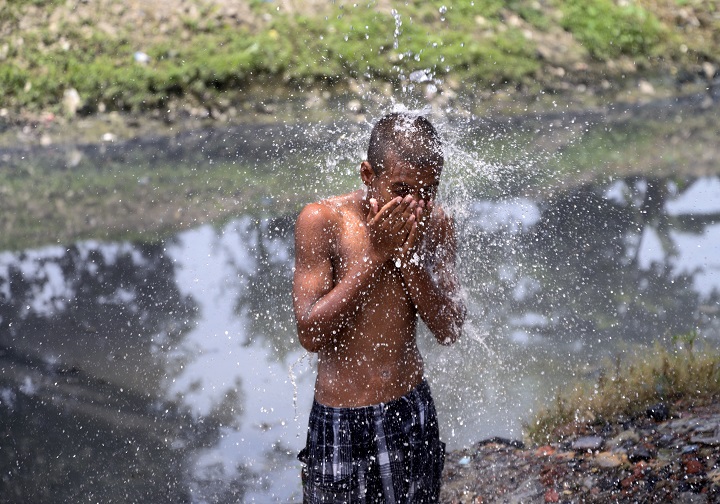A new study has concluded that continued warming temperatures could create a potentially deadly climate for those living in the Persian Gulf.

The authors of the study used business-as-usual climate models, meaning that nothing changes in the years ahead. Due to the region’s shallow water, intense sun, low elevation and clear sky, it is particularly vulnerable to high temperatures and humidity.
The human body can exist somewhat comfortably for six hours in temperatures and humidity that hovers near 35 C, something that scientists refer to as the wet-bulb temperature. That takes into effect no cooling.
READ MORE: Strong action on climate change is a ‘human responsibility’: Dalai Lama
While that temperature doesn’t seem like anything too shocking, the concerning issue is when those temperatures exist for days at a time.
But of particular note in the study is that temperatures in the region could top 60 C in the summer somewhere between 2071 and 2100. While that would, of course, be an extreme, the authors said that temperatures in excess of 45 C could be the norm at some point.
“Our results expose a specific regional hotspot where climate change, in the absence of significant mitigation, is likely to severely impact human habitability in the future,” the study read in part.
The problem is that our bodies need to sweat to keep cool, but when temperatures get too hot and we become dehydrated, our bodies are unable to do that, making it extremely dangerous. Usually, the elderly or very young are the most vulnerable, but with temperatures anticipated in this study, even the young and healthy would be vulnerable.
While along the coast of the Red Sea and Jeddah and Mecca, temperatures will be somewhat less severe, the authors say the region could still see maximum temperatures of 55 C.
Of particular concern is the annual participation in the Hajj, an Islamic pilgrimage to Mecca where as many as two million people can be standing in the heat for a full day.


Comments